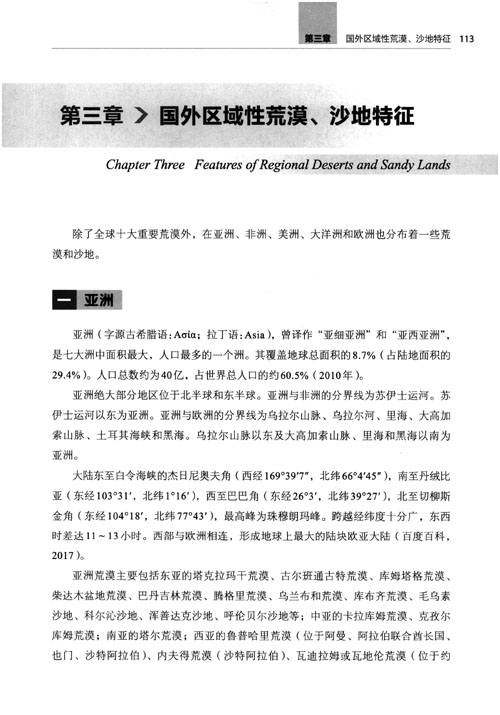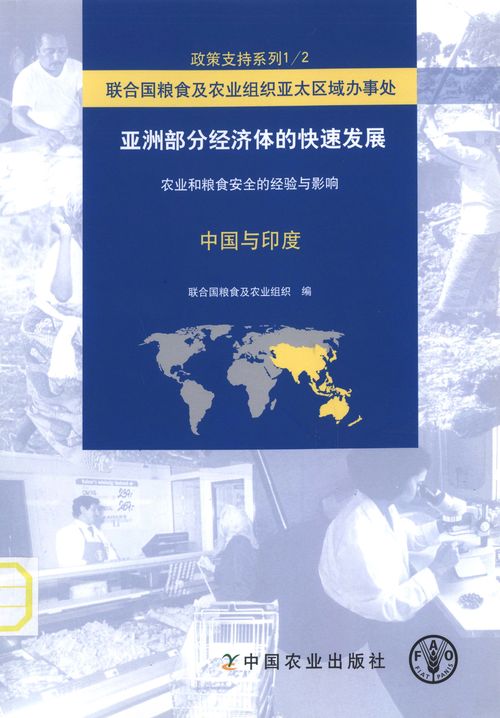
亚洲部分国家林权制度改革实践与启示
编号
lyqk004745


中文标题
亚洲部分国家林权制度改革实践与启示


作者单位
北京林业大学人文社会科学学院,北京100083;北京林业大学人文社会科学学院,北京100083


期刊名称
世界林业研究


年份
2015


卷号
28


期号
1


栏目编号
2


栏目名称
各国林业


中文摘要
我国集体林权制度改革对农村经济发展和社会公平正义影响巨大。文中回顾了自上世纪末出现的世界林权制度改革浪潮,并对其驱动力进行了分析,介绍了印度、印度尼西亚、尼泊尔、菲律宾和越南5个亚洲国家的林权制度改革实践与特点,揭示了亚洲国家林权制度改革对我国集体林权制度改革的启示。


基金项目
中国国家林业局业务委托研究项目集体林权制度改革农民权益保护跟踪观察与分析


英文标题
Practices and Inspirations of Forest Tenure Reform in Some Asian Countries


作者英文名
Wu Shourong and Zhang Zhen


单位英文名
College of Humanities and Social Science,Beijing Forestry University,Beijing 100083,China;College of Humanities and Social Science,Beijing Forestry University,Beijing 100083,China


英文摘要
China collective forest tenure reform has imposed significant effects on the economic development and the social justice in Chinese rural areas. This paper reviewed the tide of forest tenure reform that has been emerging worldwide since the 1990s, and analyzed its driving forces. By introducing the practices of forest tenure reform in India, Indonesia, Nepal, the Philippines and Vietnam, we analyzed the characteristics of the forest tenure reform in Asia, and summarized the experiences from the forest tenure reform in other Asian countries for China to learn.


英文关键词
forest tenure;reform practice;inspirations;Asia


起始页码
73


截止页码
79


投稿时间
2014/4/20


分类号
F316.2


DOI
10.13348/j.cnki.sjlyyj.2015.0001.y


参考文献
[1] Sunderlin W D, Hatcher J, Liddle M, et al. From exclusion to ownership?: challenges and opportunities in advancing forest tenure reform[R]. Washington DC: Rights and Resource Initiative, 2008:7-8.
[2] White A, Martin A. Who owns the world's forests?: forest tenure and public forests in transition[R]. Washington DC: Forest Trends, 2002: 11-15.
[3] Larson A M, Barry D, Dahal G R, et al. Forests for people: community rights and forest tenure reform[R]. London and Washington DC: Earthscan, Center for International Forest Research, 2010: 184-209.
[4] Geist H J, Lambin E F. Proximate causes and underlying driving forces of tropical deforestation[J]. BioScience, 2002, 52(2): 143-150.
[5] Poffenberger M. Communities and forest management in southeast Asia[R]. Gland: IUCN, 2001: 2-7.
[6] Ribot J C. Waiting for democracy: the politics of choice in natural resource decentralization[R]. Washington DC: World Resources Institute, 2004: 221.
[7] Bray D B, Anderson A B. Global conservation non-governmental organizations and local communities: perspectives on programs and project implementation in Latin America: working paper1[R]. Tallahassee: Latin American and Caribbean Center, Florida State University, 2006: 112-113.
[8] Schwartzman S, Zimmerman B.Conservation alliances with indigenous peoples of the Amazon[J]. Conservation Biology, 2005, 19 (3): 721-727.
[9] Singh K D, Singh J P, Sinha B. Trends in forest ownership, forest resource tenure and institutional arrangements: are they contributing to better forest management and poverty reduction?: case studies from Orissa, India[R] // Understanding forest tenure in south and southeast Asia: forestry policy and institutions working paper No.14. Rome: FAO, 2006: 81-114.
[10] Larson A M, Barry D, Dahal G R, et al. Forests for people: community rights and forest tenure reform[R]. London,Washington DC: Earthscan, Center for International Forest Research, 2010: 52-56.
[11] Sunderlin W D, Hatcher J, Liddle M, et al. From exclusion to ownership?: challenges and opportunities in advancing forest tenure reform[R]. Washington DC: Rights and Resource Initiative, 2008: 15-17.
[12] Dahal G R, Adhikari K P. Trends and impact of forest tenure reforms in Asia: cases from India, Indonesia, Lao PDR, Nepal and the Philippines[J]. Journal of Forest and Livelihood, 2008, 7(1): 19-26.
[13] Siregar U J, Rachmi A, Massijaya M Y, et al. Economic analysis of sengon (Paraserianthes falcataria) community forest plantation, a fast growing species in east Java, Indonesia[J]. Forest Policy and Economics, 2007(9): 822-829.
[14] Dahal G R, Atkinson J, Bampton J. Forest tenure in Asia: status and trends[R]. Kuala Lumpur: EU FLEGT Facility, 2011: 6-7.
[15] Singh B K, Chapagain D P. Trends in forest ownership, forest resources tenure and institutional arrangements: are they contributing to better forest management and poverty reduction?: community and leasehold forestry for the poor: Nepal case study[R] // Understanding forest tenure in south and southeast Asia:forestry policy and institutions working paper No.14. Rome: FAO, 2006: 115-152.
[16] Colchester M. Listening, learning and sharing in mainland south and southeast Asia: summary report[R]. Washington DC: RRI, 2007: 3-4.
[17] Ernesto S G, Castillo G.Trends in forest ownership, forest resources tenure and institutional arrangements in the Philippines: are they contributing to better forest management and poverty reduction? [R] // Understanding forest tenure in south and southeast Asia:forestry policy and institutions working paper No.14. Rome: FAO, 2006: 281-307.
[18] Dahal G R, Capistrano D. Forest governance and institutional structure: an ignored dimension of community based forest management in the Philippines[J]. International Forestry Review, 2006, 8(4): 377-394.
[19] Tan N Q. Trends in forest ownership, forest resources tenure and institutional arrangements:are they contributing to better forest management and poverty reduction?: case study from Vietnam//Understanding forest tenure in south and southeast Asia:forestry policy and institutions working paper No.14[R]. Rome: FAO, 2006: 355-407.
[20] Tan N Q, Ngai N B, Thanh T N. Whose forest tenure reform is it?: lessons from case studies in Vietnam [J]. Policy Brief, RECOFTC, 2008(1): 54-56.
[21] Tan N Q, Ngai N B, Thanh T N, et al. Forest tenure reform in Viet Nam: case studies from the northern upland and central highlands regions[R]. Bangkok,Washington DC: RECOFTC & RRI, 2008: 4-6.
[22] Bruce J W. Review of tenure terminology[J]. Tenure Brief, 1998(1): 1-8.
[23] O'Brien N, Matthews S, Nurse M. First regional community forestry forum: regulatory frameworks for community forestry in Asia[C] // Proceedings of a Regional Forum. Bangkok: RECOFTC, 2005: 3-33.
[24] Ostrom E, Nagendra H. Insights on linking forests, trees, and people from the air, on the ground, and in the laboratory[J]. Proceedings of the National Academy of Sciences of the United States of America, 2006, 103(51): 19224-19231.
[25] Pagdee A, Kim Y, Daugherty P J. What makes community forest management successful: a meta-study from community forests throughout the world[J]. Society and Natural Resources, 2006, 19 (1): 33-52.
[26] Ribot J C. Democratic decentralization of natural resources, institutionalizing popular participation[R]. Washington DC: World Resources Institute, 2002: 13-19.
[27] 贺东航,孔繁斌. 公共政策执行的中国经验[J].中国社会科学,2011(5):61-79.


PDF全文
浏览全文


-
相关记录
更多
- 世界林业教育改革发展现状与趋势 2021
- 国外传统竹建筑主要形式与应用 2023
- 国外生态系统综合治理实践经验与发展趋势 2023
- 新加坡和日本城市生物多样性指标的借鉴与启示 2021
- 以色列油橄榄技术对我国发展油橄榄产业的启示 2020
- 浙江安吉竹产业发展历程及启示 2020
 打印
打印



